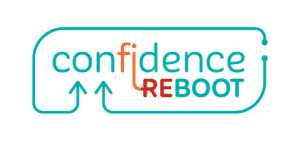
Ever found yourself in a conversation where words were flowing, but something felt off? Maybe it was a twitch, a crossed arm, or a lack of eye contact that made you think, “Hmm, there’s more to this story.“
Well, you’re not alone. Our bodies often spill the beans, revealing our true states of consciousness, even when our words try to keep things under wraps. This is the fascinating world of body language, a silent dialogue that’s always happening.
In this article, we’re going to explore some books that can turn you into a body language whiz. Imagine being able to read these subtle cues like a pro, enhancing your communication skills, and even your relationships.
Plus, we’ll touch on how understanding body language can aid in psychedelic integration. Intrigued? You should be! Let’s embark on this exciting journey together.
Table of Contents
Who is the Founder of Body Language?
The study of body language, also known as non-verbal communication, is a broad field with contributions from various individuals across different disciplines.
However, one of the key figures in the development of this field is Ray Birdwhistell, an anthropologist who is often considered the founder of kinesics, the study of human movement and gesture.
Birdwhistell’s work in the mid-20th century helped to establish body language as a significant area of research in social science.
Other Contributors to the Study of Body Language Include:
Several other researchers and theorists have made significant contributions to the study of body language:
- Paul Ekman: Known for his work on facial expressions and emotions, Ekman developed the Facial Action Coding System (FACS) to taxonomize every human facial expression. His research has been influential in understanding how emotions are expressed and perceived.
- Albert Mehrabian: Mehrabian’s research led to the often-cited rule that communication is 7% verbal (words), 38% vocal (tone of voice, speed, etc.), and 55% non-verbal (body language). While this rule is often oversimplified and its context overlooked, Mehrabian’s work emphasized the importance of non-verbal cues in communication.
- Edward T. Hall: Hall is known for his work on proxemics, the study of human use of space and the effects that population density has on behavior, communication, and social interaction. His work helps us understand how our use of physical space can communicate messages.
- Joe Navarro: A former FBI agent, Navarro has written extensively on the use of body language in law enforcement, particularly in detecting deception. His books have helped popularize the study of body language.
- Desmond Morris: A zoologist and ethologist, Morris applied his study of animal behavior to humans in his book “The Naked Ape.” He has written several books on non-verbal communication and human behavior from a biological perspective.
These individuals, among others, have greatly expanded our understanding of body language and its role in human communication.
The Power of Body Language: An Overview
You know, it’s funny. We spend so much time focusing on what we say, but often, it’s what we don’t say that speaks volumes. That’s where body language comes in. It’s this incredible, silent dialogue that’s always happening, whether we’re aware of it or not.
Body language, or non-verbal communication, is like the secret language of the soul. It’s the twinkle in your eye when you’re excited, the slump in your shoulders when you’re feeling down, the nervous tapping of your foot when you’re anxious.
It’s all these little signals that we send out, often without even realizing it.
And here’s the kicker: these signals, these non-verbal cues, they’re a huge part of our communication. Some experts even suggest that up to 93% of our communication is non-verbal.
Can you believe that? It’s like we’re all walking around with these invisible subtitles that are constantly revealing our true feelings and intentions.
Now, you might be thinking, “That’s all well and good, Kat, but what does this have to do with me?” Well, my friend, it has everything to do with you. Because understanding body language, being able to read these invisible subtitles, it’s a game-changer.
It can help you connect with people on a deeper level, build stronger relationships, and yes, even influence outcomes.
In the world of personal and professional relationships, body language is a key player. It’s the difference between a good first impression and a great one. It’s the secret ingredient that can help you build trust, show empathy, and create a positive atmosphere.
So, are you ready to unlock the power of body language? Are you ready to become fluent in this silent language? Great! Let’s start our journey with the first book on our list. Trust me, it’s a page-turner!
14 Books on the Study of Body Language
Here are 14 books that will help you master the language of the body:
What Every BODY is Saying by Joe Navarro

Joe Navarro, a former FBI counterintelligence officer, shares his expertise in this fascinating book. The key takeaway? Our bodies don’t lie. Navarro provides insights into how you can read people like a book, literally.
This book is a great starting point for anyone looking to improve their body language skills.
Nonverbal Communication by Albert Mehrabian

Albert Mehrabian’s book is what put body language on the map. This classic text explores facial expressions, gestures, and other forms of non-verbal communication with a scientific lens. It’s a must-read for anyone looking to get serious about studying body language.
Kinesics and Context by Ray L. Birdwhistell

If you’re looking to dive deeper into the world of body language, Birdwhistell’s book is a great place to start. In this comprehensive overview, he explores how non-verbal behaviors are shaped by context — from culture and interpersonal relationships to gender and social roles.
This book is essential reading for anyone interested in kinesics (the study of human movement and gesture) and the impact of context on non-verbal communication.
The Definitive Book of Body Language by Allan and Barbara Pease

This book by the Peases is a comprehensive guide to understanding body language. It offers practical lessons on reading and interpreting non-verbal cues, making it an essential read for anyone looking to master body language.
People Watching by Desmond Morris

In this book, Desmond Morris taps into his extensive background in zoology and ethology to explore non-verbal communication from a biological perspective. He examines how humans use their body language in different social contexts, offering insight into the evolution of human behavior.
It’s an essential read for anyone looking to understand the nuances of non-verbal communication.
Emotions Revealed by Paul Ekman

Paul Ekman’s groundbreaking work on facial expressions is a must-read. “Emotions Revealed” provides a deep understanding of how our emotions are reflected in our facial expressions. It’s a valuable resource for anyone looking to enhance their emotional intelligence.
Body Language for Dummies by Elizabeth Kuhnke

Don’t let the title fool you. This book is a treasure trove of practical advice and easy-to-understand explanations. Kuhnke breaks down the complexities of body language into digestible chunks, making it a perfect read for beginners.
The Silent Language of Leaders by Carol Kinsey Goman

Goman’s book is a guide for leaders who want to communicate effectively using body language. It offers insights into how leaders can use non-verbal cues to influence others and build trust.
Body Language by Julius Fast

Fast’s book is a classic in the field of non-verbal communication. It provides a thorough understanding of how our bodies communicate, making it a valuable addition to your body language library.
Telling Lies by Paul Ekman

Another masterpiece by Ekman, “Telling Lies” delves into the world of deception. It teaches you how to spot lies through subtle body language cues, a skill that’s invaluable in both personal and professional settings.
The Power of Body Language by Tonya Reiman

Reiman’s book is a practical guide to using body language to your advantage. It offers tips on how to project confidence, establish authority, and connect with others.
You Say More Than You Think by Janine Driver

Driver’s book is a step-by-step guide to using body language to get what you want. It’s packed with practical tips and exercises that will help you put your newfound knowledge into practice.
The Like Switch by Jack Schafer

In “The Like Switch”, former FBI agent Jack Schafer shares techniques for winning people over. It’s a guide to reading others, creating trust, and building relationships, all through the power of body language.
The Silent Language by Edward T. Hall

One of the earliest books on body language, Edward T. Hall’s “The Silent Language” explores the nuances of non-verbal communication — from gestures and facial expressions to posture and movement— in a cultural context.
It’s essential reading for anyone interested in learning how our culture shapes our non-verbal cues.
How to Apply What You’ve Learned from These Books
Alright, so you’ve got your reading list and you’re ready to dive into the world of body language. But let’s be real, reading about body language is one thing, actually applying it… well, that’s where the magic happens.
So, how do you take these insights from the page and bring them into your everyday life? Let’s break it down.
First up, Observe and Learn. This is your starting point. Begin by becoming a people watcher. No, I’m not suggesting you turn into a stalker! Just start paying attention to the people around you.
Notice their gestures, their facial expressions, their posture. How do these non-verbal cues align with what they’re saying? Or maybe they don’t align at all. This is your chance to start understanding the silent dialogue that’s happening all around you.
Next, Practice Makes Perfect. Now that you’re more aware of body language, it’s time to experiment with your own. Try out different techniques in your daily interactions. Maybe it’s maintaining eye contact during a conversation, or using open body language in a meeting.
Notice how these small changes can influence the way others perceive you. It’s like learning a new dance, it might feel a bit awkward at first, but with practice, it’ll become second nature.
Finally, Reflect and Adjust. Here’s the thing about body language, it’s not a one-size-fits-all kind of deal. What works for one person might not work for another. So, take some time to reflect on your experiences. What’s working? What’s not?
Don’t be afraid to adjust your approach. Remember, this is a learning process, and every step, every stumble, is a step towards mastering body language.
So, there you have it, your action plan for applying what you’ve learned from these books. It’s not about overnight transformation, it’s about gradual, consistent progress. And trust me, the impact it can have on your communication, your relationships, and yes, even your confidence, is well worth the effort. So, let’s get to it!
Conclusion
Mastering body language is a journey, not a destination. It’s a skill that can enhance your communication, build stronger relationships, and even give you an edge in your professional life. So, grab a book from this list, get comfortable, and start reading.
Your journey to becoming a body language expert starts now. Remember, the impact of mastering body language on your life coaching practice can be profound. So, let’s get reading!

